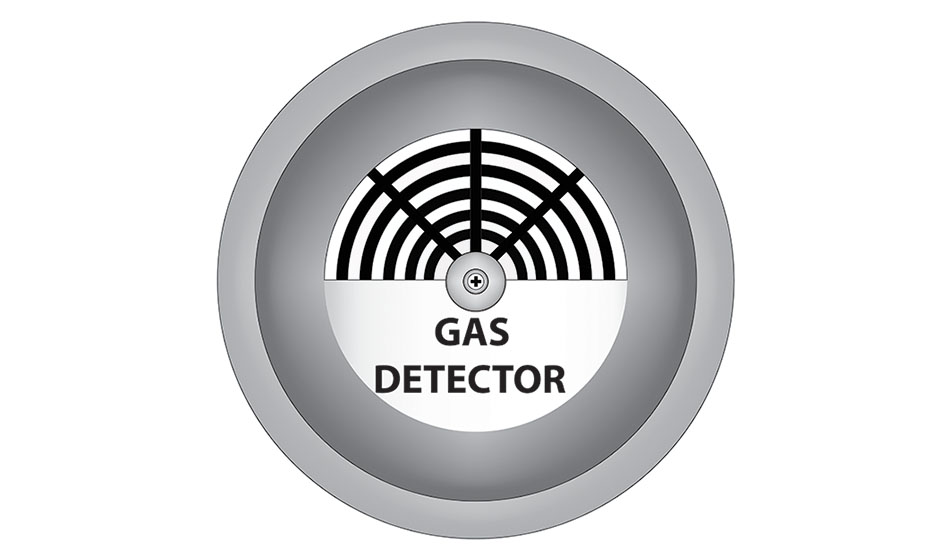
Slow Down / Shutterstock
The usefulness of carbon nanotubes (CNTs) can be supported by their applications in a wide variety of industries including electronics, batteries, optoelectronics, sensors, and supercapacitors. In terms of sensing applications, carbon nanotubes have been used for biosensors, pressure sensors, photodetectors and gas sensors.
Types of CNT-based Gas Sensors
The electrochemical and adsorption properties of any CNT is primarily dependent upon the unit surface of the tubulenes. When the adsorption and sensitivity properties of CNTs are enhanced, these materials become capable of adsorbing a wide variety of atoms and molecules onto their surface, which is useful when CNTs are incorporated into sensor designs.
As a result of these useful properties, CNTs have formed the basis of a wide variety of gas sensors including sorption, ionization, capacitance, and resonance frequency shift gas sensors.
Early CNT-based Gas Sensors
The functional principle behind most CNT gas sensors is based on the ability of these materials to transfer a charge between the CNT to the gas molecule upon interaction, thereby resulting in an altered electrical conductivity of the CNT material.
One of the earliest studies conducted on CNT-based gas sensors in the year 2000 found that a single conducting single-wall CNT (SWCNT) can alter its conductance following exposure to both nitrogen dioxide (NO2) and ammonia (NH3) gas. This study also found that the SWCNT-based sensor performed well at room temperature, which is a unique feature, as most traditional gas sensors are comprised of metal oxides that can only function at temperatures exceeding 200°C.
With sensitivity as high as 103 and a recovery time of up to 12h at this temperature, this early SWCNT-based gas sensor provided an early indication of the vast potential of this type of gas-sensing material.
In the same year, another group of researchers also utilized SWCNTs to develop a gas sensor that was highly sensitive to changes in the partial pressure of oxygen (O2) in gas environments. With sensitivity capabilities as low as 10-10 Torr, the researchers of this study found that the semiconducting CNTs became metallic following exposure to O2. As research over the following years progressed, CNT-based gas sensors were found to be more sensitive when coated with certain metals compared to when pristine CNTs were used. Furthermore, the combination of CNTs with other materials was found to improve the sensitivity and other important functional characteristics of these sensors.
Future Directions of CNT-based Gas Sensors
As demonstrated by the early CNT-based gas sensor models, SWCNTs exhibit a unique sensitivity to several gases, some of which include NO2, NH3, and other volatile organic compounds. In an effort to further expand the gas sensing capabilities of CNTs, recent studies have investigated the ability of these materials to detect sulfur hexafluoride (SF6).
The chemically inert nature and dielectric strength of SF6 allow this material to be widely used as an electrical insulator and arc-quenching medium in gas-insulated switchgears (GIS). When such equipment is running for an extended period of time, SF6 is more likely to decompose into a variety of chemicals, including sulfur dioxide (SO2), dihydrogen sulfide (H2S), sulfuryl fluoride (SO2F2), tetrafluoromethane (CF4) and thionyl fluoride (SOF2). The ability of these chemicals to enter equipment, cause corrosion and ultimately accelerate their failure has caused researchers to become interested in detecting these SF6 decomposed components.
Unfortunately, both theoretical and experimental studies have been unsuccessful in improving the sensitivity of CNTs to SF6; however, the decomposed components of SF6 have been successfully detected by various theoretical CNT-based sensors. To this end, researchers have found that intrinsic CNTs, as well as those that have been modified through doping or by adding a functional group, could potentially detect some of the common SF6 decomposition components. While further experimental studies must still be performed in order to validate these predictions, the high sensitivity and rapid response time of CNT-based gas sensors offer a promising future for resolving SF6-related equipment downtime and repairs.
Sources
- Zaporotskova, R. V., Boroznina, N. P., Parkhomenko, Y. N., & Kozhitov, L. V. (2016). Carbon nanotubes: Sensor properties. A review. Modern Electronic Materials 2(4); 95-105. DOI: 10.1016/j.moem.2017.02.002.
- Camilli, L., & Passacantando, M. (2018). Advances on Sensors Based on Carbon Nanotubes. Chemosensors 6(62). DOI: 10.3390/chemosensors6040062.
- Zhang, X., Cui, H., Gui, Y., & Tang, J. (2017). Mechanism and Application of Carbon Nanotube Sensors in SF6 Decomposed Production Detection: a Review. Nanoscale Research Letters 12(177). DOI: 10.1186/s11671-071-1945-8.
Disclaimer: The views expressed here are those of the author expressed in their private capacity and do not necessarily represent the views of AZoM.com Limited T/A AZoNetwork the owner and operator of this website. This disclaimer forms part of the Terms and conditions of use of this website.